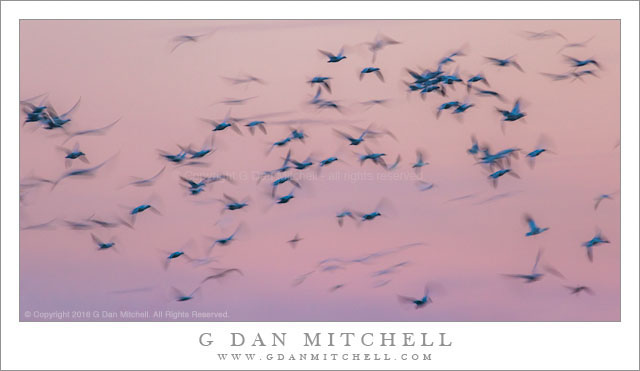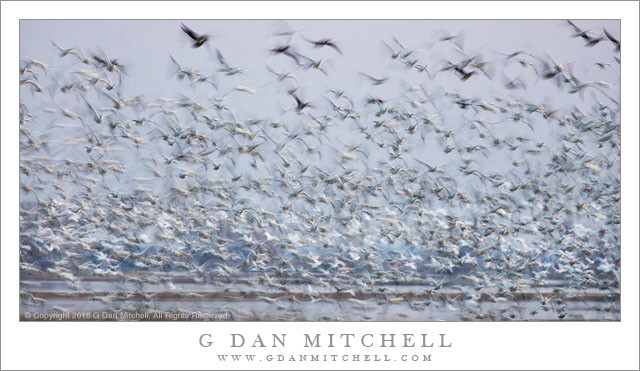
Twilight Birds. Central Valley, California. February 5, 2016. © Copyright 2016 G Dan Mitchell – all rights reserved.
A flock of geese against twilight sky above the Central Valley
February was mostly a very good month for photographing migratory birds in the Central Valley this winter. This was a relief, quite honestly, after the past four years of drought and increasingly dire conditions in the Valley and throughout the state. In normal times, the wildlife refuges where I often photograph can be filled with water and life in the winter — flowing creeks and flooded fields where thousands of birds collect. But much of this water comes from sources that are not local, and as they dried up the refuges also began to shrink the acreage that was under water. It was sad to see locations that I’ve thought of as ponds become plain, dry fields. And at times the birds seemed to suffer a bit, too, or at least change their habits. Back in the late fall, before the course of the winter season became clear and Northern and Central California received rain again, we were concerned about what would happen this year.
But in most of California the rains came, at times heavy, and water flows once again. The birds returned, and sometimes it seemed that there numbers were exploding with the return of water. By February it wasn’t uncommon to find many thousands of birds in the refuges, and by late in the month the scene was downright wild, with all kinds of geese, huge numbers of cranes, and much more. In the evening things become active, and as the light fails I often continue to photograph, but at longer shutter speeds that allow me to work with the moving poetry of blurred birds in flight against dusk sky.
 G Dan Mitchell is a California photographer and visual opportunist. His book, “California’s Fall Color: A Photographer’s Guide to Autumn in the Sierra” is available from Heyday Books and Amazon.
G Dan Mitchell is a California photographer and visual opportunist. His book, “California’s Fall Color: A Photographer’s Guide to Autumn in the Sierra” is available from Heyday Books and Amazon.
Blog | About | Flickr | Twitter | Facebook | Google+ | 500px.com | LinkedIn | Email
All media © Copyright G Dan Mitchell and others as indicated. Any use requires advance permission from G Dan Mitchell.



